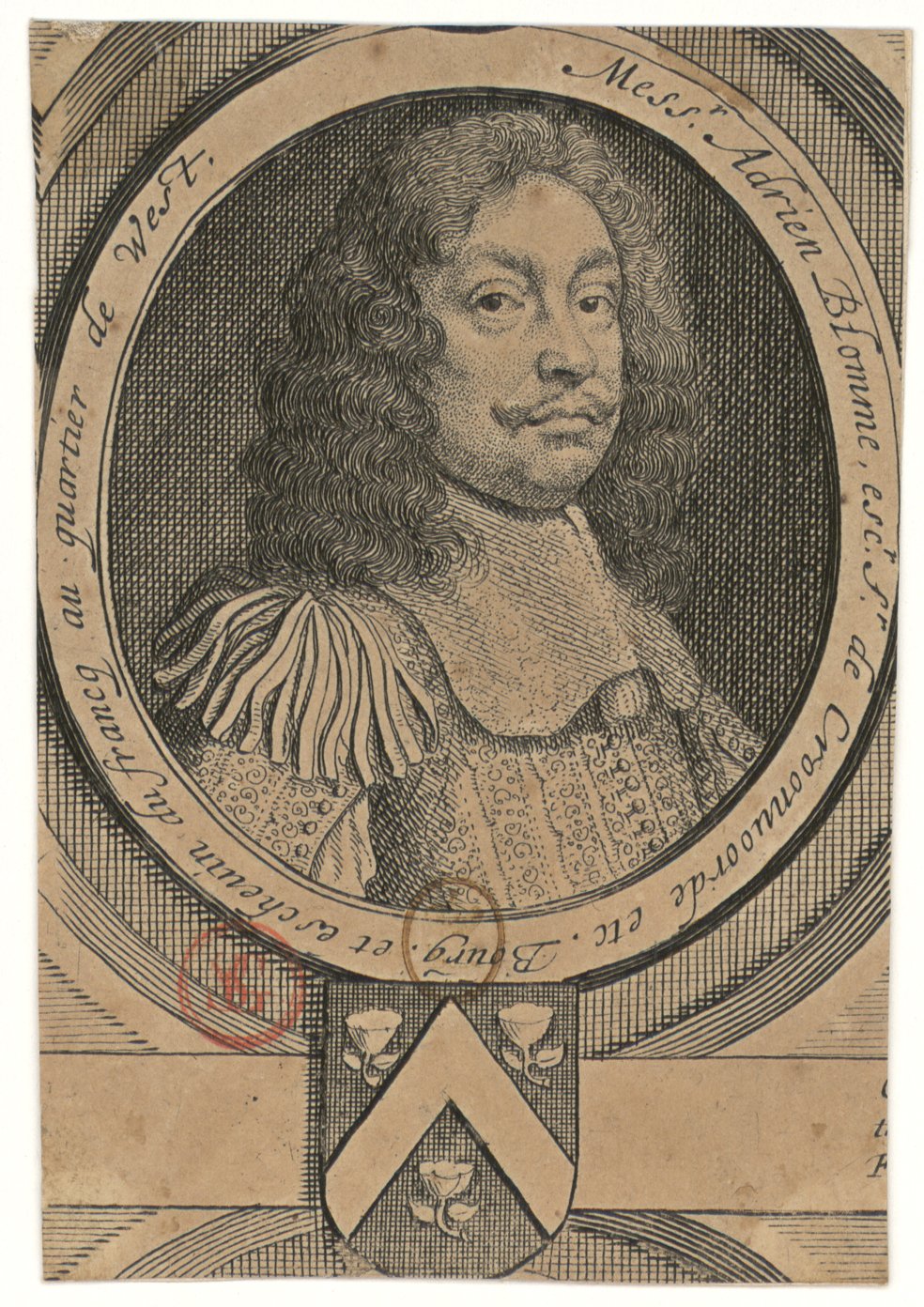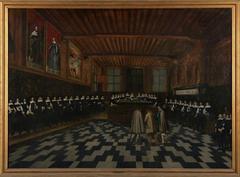
Brugse Vrije: Visiting Hours, Tickets, and Historical Sites in Bruges
Date: 14/06/2025
Introduction
The Brugse Vrije, or Liberty of Bruges, is a magnificent historical monument at the heart of Bruges’ Burg Square. Renowned for its pivotal role in medieval governance and its stunning blend of Gothic, Renaissance, and Louis XIV architecture, the Brugse Vrije offers an immersive journey through the city’s civic, artistic, and political heritage. This guide provides detailed, up-to-date information on visiting hours, ticketing, accessibility, guided tours, and nearby attractions, ensuring you have all you need to plan an enriching experience at one of Bruges’ most iconic sites. For official updates and travel tips, consult Visit Bruges and Go Travel Daily.
Table of Contents
- Introduction
- Historical Overview
- Architectural and Artistic Highlights
- Political and Social Importance
- Cultural Significance
- Visitor Information
- What to See
- Nearby Attractions
- Frequently Asked Questions (FAQ)
- Conclusion & Further Resources
- References
Historical Overview
Founded in the 12th century, the Brugse Vrije was a powerful autonomous district in Flanders, serving as the administrative and judicial hub for the countryside surrounding Bruges. Its council mediated between the city and the feudal lords, managing justice, taxation, and rural affairs. The current building, constructed between 1722 and 1727, replaced earlier Gothic structures and stands as a testament to the city’s enduring significance in regional governance (Visit Bruges).
Architectural and Artistic Highlights
The Brugse Vrije’s façade showcases 18th-century Louis XIV style, with classical and baroque elements, gilded details, and allegorical sculptures symbolizing justice and civic pride. Inside, the Renaissance Hall is a highlight, featuring the monumental Emperor Charles V fireplace—a masterpiece by Lanceloot Blondeel and Guyot de Beaugrant, carved in 1528. This fireplace, recently restored, displays intricate carvings of the emperor, his family, and allegorical figures like Justice and Prudence. The hall also houses original charters, portraits, and artifacts that illuminate the region’s governance (VRT NWS, The Crazy Tourist).
Political and Social Importance
For centuries, the Brugse Vrije council wielded considerable power over land, law, and taxation, acting as a crucial link between Bruges and the surrounding rural communities. Its records, preserved in city archives, reveal a rich tapestry of social, economic, and legal life from the Middle Ages through the 18th century. The institution was dissolved in 1795 during the French Revolution, but its legacy continues to shape Bruges’ identity (Visit Bruges).
Cultural Significance
Today, the Brugse Vrije stands as a symbol of Bruges’ civic traditions, autonomy, and artistic achievement. Its prominent location beside City Hall and the Basilica of the Holy Blood on Burg Square underscores its historical importance. The Renaissance Hall continues to host cultural events and official receptions, maintaining its role as a living monument (Full Suitcase).
Visitor Information
Visiting Hours
- Standard Hours: Tuesday to Sunday, 9:30 AM – 5:00 PM
- Closed: Mondays and select public holidays
- Note: Hours may vary during January, holidays, or special events. Always check the latest updates on the official Visit Bruges website.
Tickets & Admission
- Adults: €6–€12 (price varies by season and type of ticket)
- Discounts: Available for students, seniors, and children
- Combination Tickets: Includes entry to Bruges City Hall; available for those seeking a broader historical experience
- Bruges City Card: Accepted for entry and can be purchased in advance (Go Travel Daily).
Guided Tours
- Audio Guides: Offered in Dutch, French, English, and German
- In-Person Tours: Available for individuals and groups; advance booking recommended, particularly during busy periods or for special interests
- Duration: Typically 1–1.5 hours, often combined with other city attractions
Accessibility
- Main Entrance: Three steps; portable ramp available on request (steep—assistance recommended)
- Interior: Renaissance Hall is step-free, though some doors may require assistance
- Restrooms: Available nearby with variable accessibility
- Audio Guides: Free and available in five languages; Braille and large print materials at tourist offices
- Wheelchair Parking: Free with European disability parking card—see navigeerenparkeer.be for locations
- Additional Support: Contact ahead for specific accessibility needs (Visit Bruges Accessibility)
Location & Getting There
- Address: Burg 11A, 8000 Brugge, Belgium
- By Public Transport: 20-minute walk from Bruges train station; frequent city buses stop near Burg Square (Eupedia)
- By Car: Limited central parking; use ‘t Zand or railway station garages with shuttle or 15-minute walk
- On Foot: Easily reachable from the Markt, Belfry, and other city center landmarks
- Accessible Shuttle: Free electric shuttle from the train station to central sites
Visitor Tips
- Best Time to Visit: Weekday mornings and late afternoons are quietest; May and September offer pleasant weather and fewer crowds
- Photography: Non-flash photography permitted; the Renaissance fireplace is a top spot. For best lighting, visit late morning
- Dress: No formal code; comfortable shoes recommended for cobbled streets
- Weather: Be prepared for rain year-round—bring a light jacket or umbrella (The Discoveries Of)
- Languages: Staff speak Dutch, French, and English; audio guides cover five languages
What to See
- Renaissance Room: Marvel at the Emperor Charles V fireplace and period furnishings
- Exhibits: Explore charters, legal documents, and portraits detailing Bruges’ civic history
- Photographic Opportunities: Renaissance Room mantelpiece and Burg Square views
- Events: Occasional temporary exhibitions, lectures, and official ceremonies—check ahead for closures
Nearby Attractions
- City Hall (Stadhuis): Gothic masterpiece adjacent to Brugse Vrije
- Basilica of the Holy Blood: Renowned for its religious relic and architecture
- Market Square (Markt) & Belfry: Iconic city center and panoramic tower views
- Groeningemuseum: Collection of Flemish Primitive art
- Quay of the Rosary (Rozenhoedkaai): Picturesque canal tours
- De Halve Maan Brewery: Historic brewery with tours and tastings (Go Travel Daily)
Frequently Asked Questions (FAQ)
What are the Brugse Vrije visiting hours?
Tuesday to Sunday, 9:30 AM to 5:00 PM. Closed Mondays and some holidays. Confirm on official site.
How do I buy tickets?
Tickets are available on-site. Combination tickets with City Hall are recommended for a fuller experience. Advance booking is advised for groups.
Is Brugse Vrije accessible for wheelchair users?
The main entrance has a steep portable ramp (assistance recommended); Renaissance Room accessible. Contact in advance for specific needs.
Are guided tours available?
Yes, both audio and guided tours are offered. Group tours can be tailored to interests and accessibility requirements.
Are there special events or exhibitions?
Temporary exhibitions and official events are held periodically. Check the Visit Bruges website for updates.
Conclusion & Further Resources
The Brugse Vrije is a cornerstone of Bruges’ history, architecture, and culture. From its origins as a medieval seat of power to its present role as a living monument, it provides invaluable insight into the city’s past. Make the most of your visit by checking the latest hours, combining your ticket with City Hall, and planning time to explore Burg Square’s many attractions. For the best experience, visit during quieter hours, utilize accessibility services, and join a guided tour.
Stay informed about special events and seasonal highlights by consulting the resources below. For travel tips, audio guides, and the latest updates, download the Audiala app and follow us on social media.
Additional Resources
- Visit Bruges Accessibility Portal
- Brugse Vrije on Trip.com
- Eupedia Bruges Guide
- The Discoveries Of: Bruges Travel Guide













































































